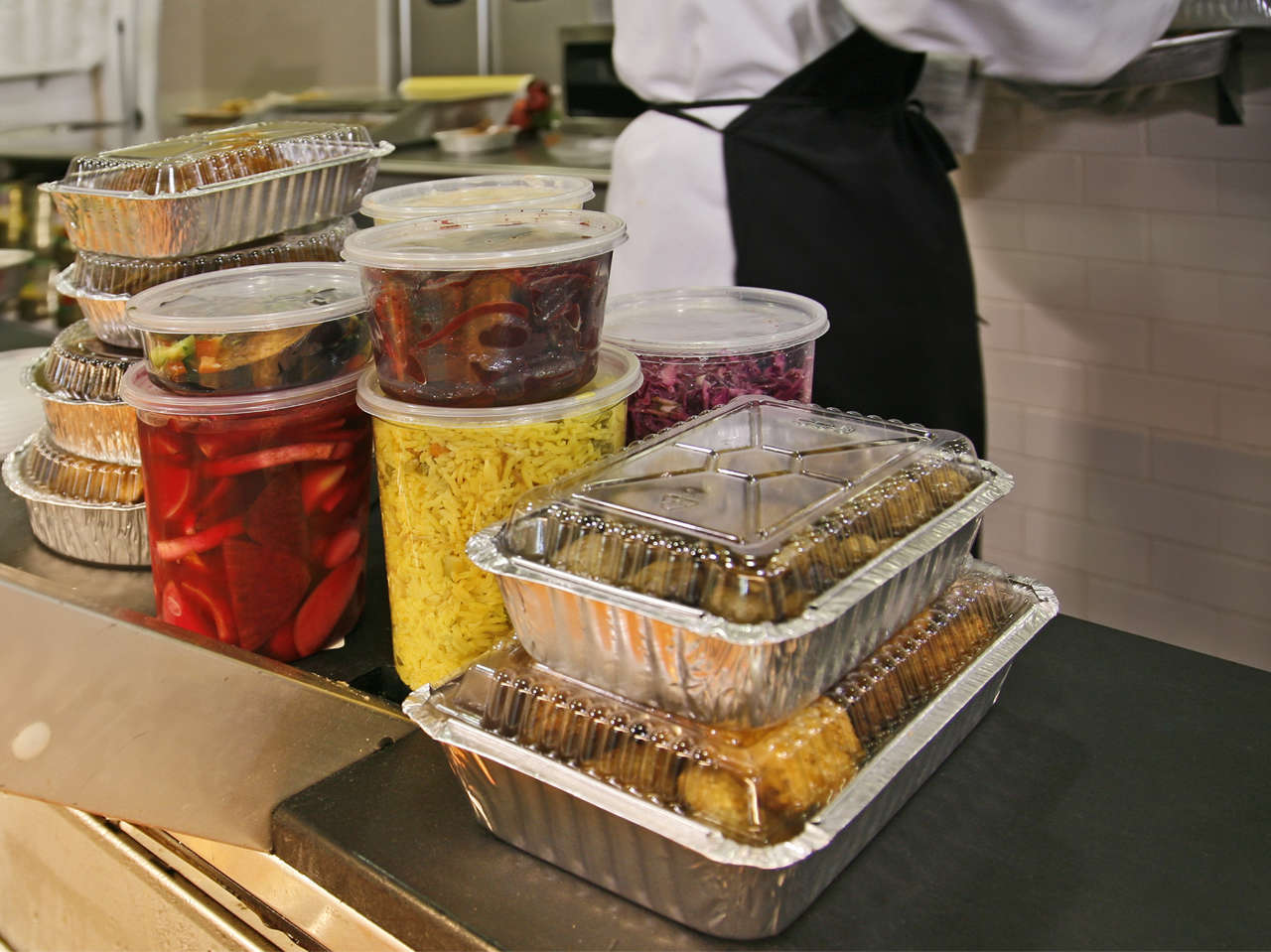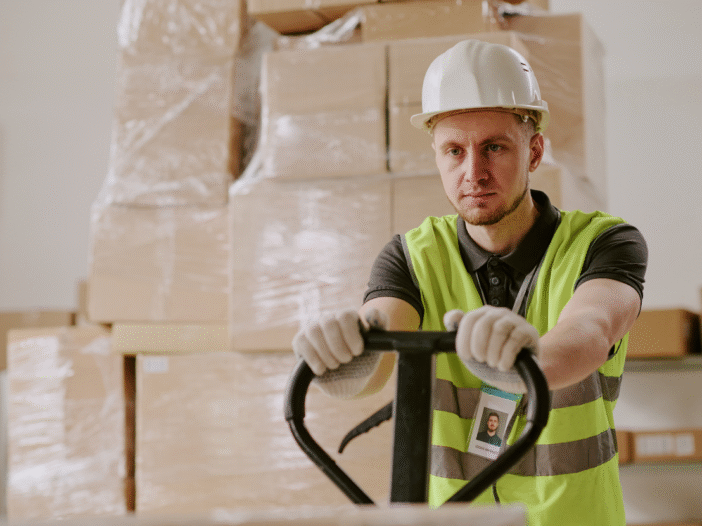
If your organisation handles food, it’s vital that you understand when and how you can reheat it. Incorrectly reheated food poses a serious health risk to those who eat it and as a result you may face large fines from the authorities and serious damage to your organisation’s reputation.
The latest data from the Food Standards Agency shows there are around 2.4m cases of food poisoning in the UK each year, an increase of one million since 2009.
While undercooked and poorly handled foods at the first time of serving are major causes of food poisoning, not properly reheating food to the correct temperature can fail to kill harmful bacteria or spores that may have grown since the food was initially cooked.
Anyone selling or processing food is legally obliged to operate safely and hygienically.
A food safety assessment, based on the principles of HACCP (Hazard Analysis and Critical Control Point) should be carried out in addition to ensure that measures are in place such as using separate knives, utensils and equipment such as different chopping boards for raw and cooked foods. Ensure that thorough cleaning and sanitising of both equipment and structures are in place, such as separate food preparation areas for raw and ready-to-eat food.
Every year thousands of people suffer illness as a result of poor food safety. Our online Food Safety Training provides fundamental training for food handlers working in catering and other environments where food is prepared, cooked and handled.
Why reheating food temperature control is important
Mishandling food and not following reheating food guidelines increases the likelihood of food poisoning, which can lead to nasty illnesses and even death.
Common bacteria that cause food-related illnesses include:
- Campylobacter – Food poisoning from these bacteria affect an estimated 280,000 people each year in the UK that is most commonly associated with raw chicken, unpasteurised milk and untreated water.
- Salmonella – Found in raw meat, undercooked poultry and eggs, inadequate cooking and cross-contamination from these sources is the usual cause of infection from these bacteria, however poor hand hygiene such as not washing hands after using the bathroom can also lead to infection.
- Clostridium perfringens – A spore-forming bacterium whose spores can withstand cooking. When food is cooled too slowly and not refrigerated, the bacterium will reproduce. Food poisoning will most often occur when food – usually meat – is prepared in advance and kept warm for several hours before serving.
How to reheat food safely
When reheating food, the equipment that you use is important. If it is not properly used or is unsuitable, the temperature of the reheated food might not be hot enough to kill any bacteria.
Ovens and grills should be preheated before reheating, and if using a microwave, it is recommended that you stir the food regularly as the food may be hot around the edges but still cold in the middle.
Food should only be reheated once.
As a general rule, you should be reheating food to a core temperature of at least 75°C.
Reheated food should be piping hot all the way through and should be served immediately to prevent harmful bacteria from growing.
All employees handling food should be proficient in food safety and understand how many times you can reheat food. An online Food Safety Training is an excellent way to ensure employees are knowledgeable about food safety.
Reheating advice for different foods
Anyone handling food should understand how and when you can reheat common products such as chicken, rice, eggs, fish, pasta, pork and salmon. Here’s our guide:
Rice
Uncooked rice can contain Bacillus cereus spores which can survive being cooked. The longer the rice is left standing at room temperature the higher the likelihood that the spores will grow into toxin-producing bacteria. Leftover rice should be placed in a fridge below 5°C within one hour of being first served.
Rice should be kept in the fridge for no more than 24 hours until reheating, and reheated only once so that it is steaming throughout.
Meat
Meat, particularly poultry such as chicken and turkey, is a major cause of food poisoning.
When first cooked, poultry, pork and minced meat products such as burgers should be piping hot and cooked through, with no red meat inside and all juices running clear. Whole cuts of meats such as steak should be fully seared on the outside to kill any surface bacteria.
Leftover meat for reheating should be cooled within 90 minutes and placed in a fridge below 5°C away from any raw foods.
The Food Standards Agency advises that you should reheat chicken, pork and other meat only once and within two days of it being cooked. It must be piping hot all the way through, and at least 75°C in the middle.
Dairy
Milk, eggs, cheese, cream, cheese, yoghurt and other dairy products are high-risk foods and you should take care when reheating them.
Most egg dishes can be reheated including boiled, poached and scrambled eggs but they should only be reheated once. They should be refrigerated within 90 minutes after being cooked the first time and cooled.
While they can be reheated, fried eggs are likely to be tough and rubbery so not enjoyable to eat if heated again.
Cheese and cheese products such as pizza and lasagne are suitable for reheating but must be refrigerated within 90 minutes of cooking having cooled and consumed within two days. If the dish also contains fish, consumption within two days is recommended.
Fish and shellfish
Fish and seafood can transmit several illnesses such as including scombroid poisoning, which is most commonly caused by eating spoiled fish.
If you intend to reheat fish and shellfish, it should be stored in a fridge as quickly as possible after it has been cooked, ideally within one hour. As with all foods, seafood should only be reheated once and consumed within two days.
Pre-cooked prawns can be eaten cold but if you do decide to heat them, you should only reheat them once.
Pasta
Pasta itself is not a high-risk food, however, it can cause different types of food poisoning if it is mishandled (such as being contaminated from raw foods) or because of the ingredients it has been cooked with, such as meat, fish or dairy. It can be safely reheated if it’s refrigerated within 90 minutes.
Pasta dishes should be consumed within two days. As with all other reheated food, it should be piping hot throughout.
Keep your food business safe
The general principles for reheating food should be followed by individuals cooking at home, but they are vital for food organisations and food businesses operators. Get it wrong and you risk poisoning your employees or members of the public and could face fines or even imprisonment.
Reheating food is important when serving food in all situations and you should also remind your employees about how to reheat their own food safely in organisation canteens. Consider an online Food Safety Training to top up their knowledge.
Food safety is everyone’s responsibility, and while we should all do what we can to combat food waste, best practices must be followed.
Ensure your employees are aware of the risks presented by reheating food with our online Food Safety Training, including how to recognise food safety hazards and the importance of food temperature control.

Adam Clarke
Managing Director (Consulting)
